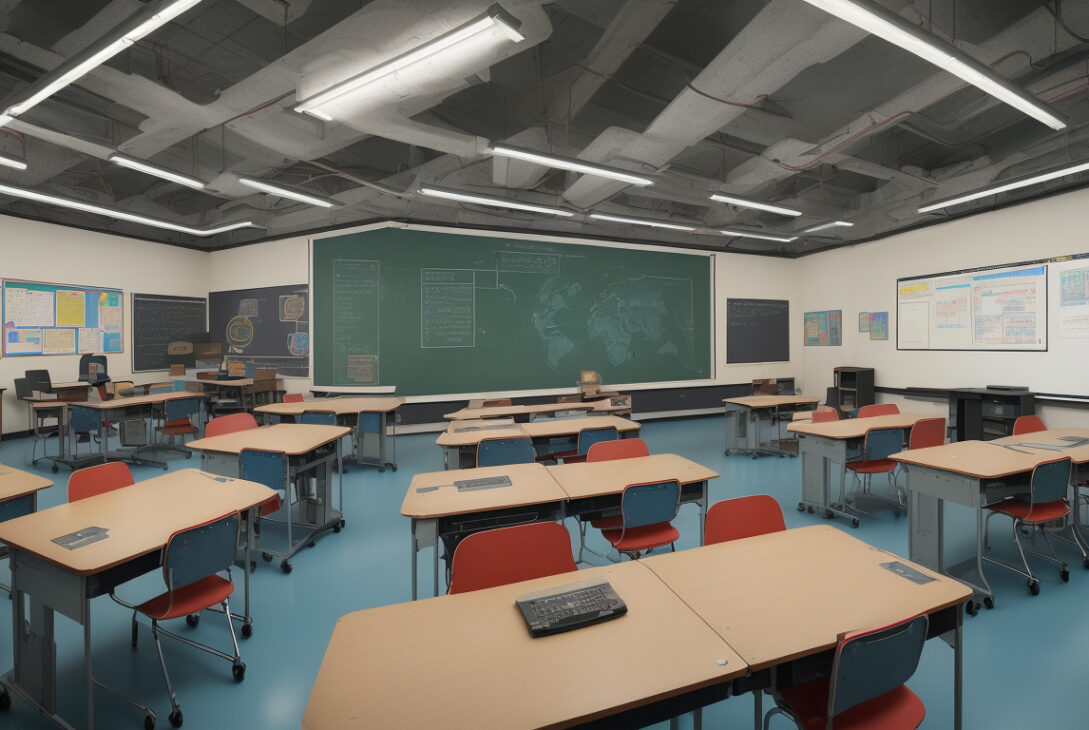What Past Education Technology Failures Can Teach Us About the Future of AI in Schools
For over a century, American technologists have urged educators to quickly adopt new inventions, promising transformative benefits for education. Yet history reveals a different story. From Thomas Edison’s 1922 prediction that film strips would replace textbooks due to their supposed efficiency, to recent calls for rapid AI adoption in classrooms, swift implementation of new technologies rarely results in lasting educational improvements. Justin Reich, a professor of Digital Media at the Massachusetts Institute of Technology (MIT), shares insights from past education technology failures and offers thoughtful strategies for integrating artificial intelligence (AI) in schools today.
Lessons from the Past: Technology’s Mixed Track Record in Education
Despite the excitement surrounding digital tools, Reich’s research at MIT has consistently found no evidence that early adopters of new technologies—whether mobile phones in classrooms or internet-connected schools—achieved superior educational outcomes, economic growth, or citizen well-being compared to more cautious peers.
New technologies, he argues, are only as impactful as the communities that guide their use. While opening a browser tab is easy, cultivating effective learning environments is complex and requires time. Shifts in educational norms, teacher practices, student routines, and family support systems can take years before novel inventions lead to tangible benefits.
Another cautionary tale comes from earlier efforts to teach students how to critically evaluate online information. From 2003 onward, educators taught students to assess websites based on surface markers like domain names or citations, using frameworks such as the CRAAP test (Currency, Reliability, Authority, Accuracy, Purpose). This approach seemed reasonable, but a 2019 peer-reviewed study revealed students trained in this way performed poorly in distinguishing truth from fiction. Instead, experts used a method called lateral reading—quickly scanning multiple sources—that proved to be more effective. This overturn of long-standing practice demonstrates how well-intentioned educational reforms can be misguided absent strong evidence.
The Urgency and Challenges of AI Integration
Today, the conversation around AI in education echoes past enthusiasm but with higher stakes. AI is not a simple tool to be adopted like a computer or a smartboard; Reich calls it an “arrival technology” that changes the educational landscape, often unpredictably, pushing schools to respond urgently.
In interviews with nearly 100 educators across the U.S., a common sentiment emerges: teachers want to navigate AI’s potential but resist doing so unaided. Meanwhile, a fast-growing industry of consultants and tech companies promotes AI literacy frameworks and generative AI applications for everything from tutoring to lesson planning. However, these initiatives currently lack robust evidence of effectiveness, much like earlier educational technologies.
A Prudent Path Forward: Humility, Experimentation, and Assessment
Reich suggests that, while we await comprehensive scientific studies—which could take a decade or more—educators themselves should adopt a scientific mindset in using AI, guided by three key principles:
-
Humility: Recognize that current AI teaching practices and literacy frameworks are best guesses. What educators believe about AI’s role in schools today might later be disproven, requiring flexible adaptation.
-
Experimentation: Schools should evaluate their own unique contexts to decide where AI experimentation fits. Some subjects or projects might benefit from bold integration, while others warrant caution. For example, Eric Timmons, a filmmaking teacher in Santa Ana, California, uses AI enthusiastically to support creative projects, encouraging students to integrate AI tools without fear of replacement. Conversely, foundational courses, such as ninth-grade English writing, may require more guarded approaches.
-
Assessment: Since formal scientific validation is slow, educators should collect and compare student work from before and after AI introduction to gauge impact on learning outcomes. Local assessments offer timely feedback to refine or reconsider AI practices.
Looking Towards 2035 and Beyond
By 2035, Reich believes education stakeholders—teachers, researchers, and policy-makers—will have gained substantial knowledge about AI’s role in schools. AI may emerge much like the internet: a resource with risks but contributing significant educational value. Alternatively, it might resemble mobile phones, whose negative effects on well-being and learning have prompted calls for stricter restrictions.
The rush to implement AI should not be a competition to be first but a thoughtful race to be right. Educators must balance enthusiasm with caution and prioritize evidence-based methods to ensure AI enhances, rather than hinders, student learning and development.
About the Author:
Justin Reich is a professor of Digital Media at the Massachusetts Institute of Technology (MIT). He has received funding from major technology and philanthropic organizations and studies the history and future of education technology.
This article was originally published on The Conversation on October 3, 2025.
DOI: https://doi.org/10.64628/AAI.vvdntn96m
Full article: https://theconversation.com/what-past-education-technology-failures-can-teach-us-about-the-future-of-ai-in-schools-265172










